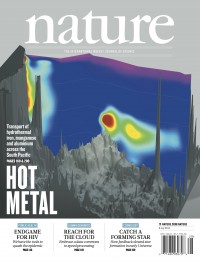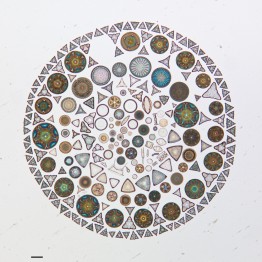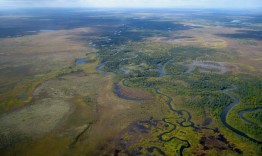Freshwater streams and rivers actually release carbon dioxide, but the source of those emissions has been unclear to scientists for years. Now, researchers have shown that the greenhouse gas appears in streams by way of two difference sources—either as a direct pipeline for groundwater and carbon-rich soils, or from aquatic organisms releasing the gas through respiration and natural decay. David Butman, professor of environmental and forest sciences and civil and environmental engineering, is part of the team that recently found that CO2’s origins—land or life—depend largely on the size of the stream or river.
Read more at UW Today »JISAO, NOAA find that seafloor hot springs are significant source of ocean's iron
On the seafloor, volcanic and magmatic forces create hot springs that spew heated water into the depths of the ocean. Hot, acidic water scours metals from Earth’s crust, and these warm, chemical-rich waters support exotic deep-sea ecosystems. Historically, metals like iron and manganese were thought to quickly react and form particles that would clump together or stick to other things, causing them to sink to the seafloor.
Read more at UW Today »Meet Meryl Mims, Aquatic and Fishery Sciences graduate student
With two degrees under her belt and dissertation research to complete, Meryl Mims found herself in southeastern Arizona’s Sky Islands in the summer of 2013. In a landscape known for the juxtaposition of its sprawling features—where towering, forested mountains seep upward through the desert’s dry, cracked surface—a two-inch long frog captured Mims’ attention. “We were already out there and we were hearing the Arizona treefrogs.
Read more »UW oceanographers shed light on the hidden world of marine microbes
Tiny marine microbes produce half of Earth’s oxygen, absorb carbon dioxide from the air, and even regulate the productivity of fisheries. Scientists are only beginning to understand the ecology of these microscopic creatures, but discoveries made by researchers at the College of the Environment’s School of Oceanography are informing our understanding of their hidden world. Oceanographer Ginger Armbrust and her team, using genetic and molecular toolsets, recently found that single-celled algae called diatoms grow faster when a hormone released by bacteria is present.
Read more at UW Today »Chemical tags in ear bones track Alaska's Bristol Bay salmon
Scientists from Aquatic and Fishery Sciences and other institutions are learning a lot about where Chinook salmon swim in Alaska’s Bristol Bay region through chemical signatures recorded in their ear bones. Similar to a tree’s growth rings, this bone—called an otolith—accumulates layers as the fish grows. Acting as a little recorder, each layer of the otolith corresponds to the unique chemical signatures of the waters in which they swam.
Read more at UW Today »





